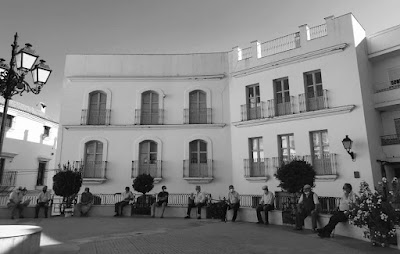I wrote this post in 2010, two years after we moved to Alcalá. I'm reposting it now because most of it is still true, and recent arrivals to the pueblo might find it entertaining, if not informative ... ************ A few years ago, while still a wage-slave in the UK, I made a list of all the reasons why I didn’t want to live there any more. Near the top of the list was Big Bad Supermarkets: their crimes included driving small shops and farmers out of business, seducing us into buying microwave ready-meals packed with additives, selling tasteless meat alongside jars of goo that supposedly turn it into something a celebrity chef would be proud to serve, wrapping fruit and veg in umpteen layers of plastic and then charging us for carrier bags “to help protect the environment” ... you know what I’m on about. And as for 24-hour opening, I’m not even going to go there, it’s the road to madness. To cut a long story short, I now live in Alcalá de los Gazules in the province of Cádi






